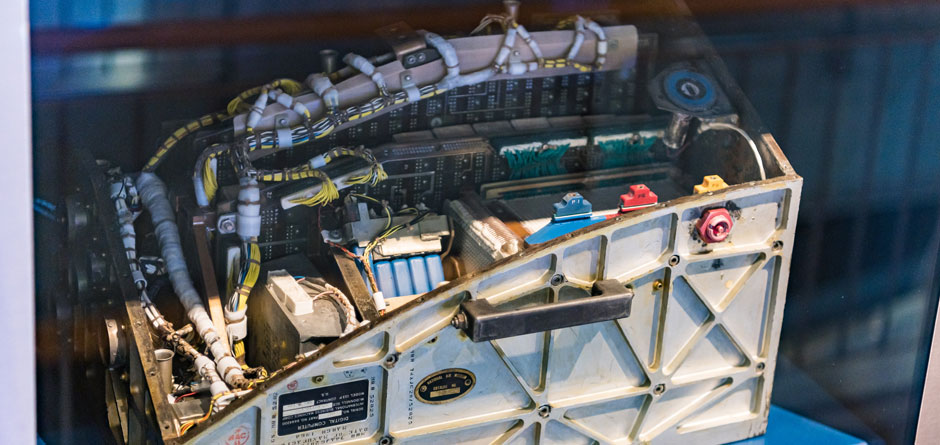Probably around 1949, Thomas J. Watson Sr. estimated that there was a market for no more than a dozen computers and decided that IBM had no place in that business. Considering the purpose for which the first machines were built, his prediction was sound. But, in a very short time, the areas in which computers were used had extended well beyond the calculation of tables and computation of trajectories.
The first orders for computers came from the armed forces. From 1948, scientists in the USA built electronic computers modelled on the EDVAC (Electronic Discrete Variable Automatic Computer). In 1945, the concept of this machine already envisaged storing the program together with data in a fast main memory. A system from the Massachusetts Institute of Technology (MIT) was the basis for the SAGE (Semi-Automatic Ground Environment) air defence system, which monitored American air space and supported various defence mechanisms well into the 1980s.
Military and scientific applications were soon joined by statistical and commercial applications. Eckert and Mauchly, the build-ers of the ENIAC, launched the UNIVAC I at Remington Rand in 1951. This was the first "electronic brain" to be produced in series. The U.S. Bureau of the Census used it to replace its punched card systems.
In 1954, the LEO in Great Britain showed that computers could be used to automate office work. The EDSAC (Electronic Delay Storage Automatic Computer), made by the University of Cambridge in England, was the model for the Lyons Electronic Office computer produced by Lyons in Cadby Hall. Unlike its military counterpart, LEO was used for "mundane" office activities.
At the same time in Germany, ZUSE KG shipped the Z5 relay computer to Optische Werke Leitz in Wetzlar. This first-generation computer supported their design of optical equipment.
This machine, which was modelled on the Z4, was soon replaced in 1956 by an ELLIOT 502 from Great Britain. Heinz Nixdorf began to develop electronic add-on units for punched card devices and accounting machines from 1952 in his Labor für Impulstechnik. Later he developed freely programmable small computers for accounting.
About 8,000 computer systems had been installed throughout the world towards the end of the 1950s. There was still a wide variety of systems, with over 30 companies offering computers in all performance classes. The launch of the IBM System/360, the first compatible-family product line for electronic data processing (EDP), made life difficult for the competition. These companies only survived in market niches with special computer applications.
However, computers remained machines for specialists until the end of the 1960s. Only scientists had learned to formulate their problems in a way that machines could cope with - using the FORTRAN programming language.
High-level programming languages for other sectors and applications still had to be developed. This meant that a wide range of knowledge and qualifications was required to run a computer - ranging from the basic circuits of the computer and its internal organization to expert knowledge of the operating system and tricks for efficient programming. Users therefore had great need of consulting services. As early as the end of the 1950s, consultancies had been established in Germany offering services in the field of electronic data processing.
Applications originating from classic punched card processing that could be handled faster and more conveniently with these electronic machines included payroll accounting, inventory management, order processing and automatic invoicing. Not until later were computers used on a routine basis for such jobs as building databases and carrying out statistical analyses for executive management. Getting such applications up and running also required specialists to tailor these methods to specific requirements, and also to implement them as programs on installed computers.
